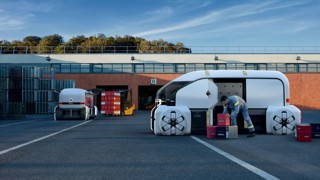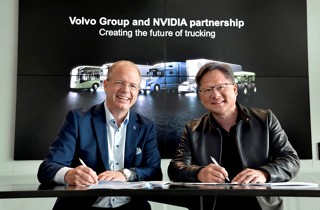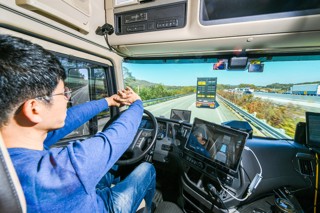By Phil Lloyd, head of engineering and vehicle standards policy at the Freight Transport Association (FTA)
Today’s vehicles have large quantities of technology embedded in them as standard, with their functionality assisting drivers with features which are fully-autonomous (engine control/emissions systems), semi-autonomous (lane departure and assistance), or via assistance-warning (parking sensors).
Although many of these functions are designed to aid driver and passenger comfort, the vast majority are focused on safety.
With these systems becoming ever more complex, there can be a tendency for drivers to become more reliant upon those systems for safe driving, which in turn necessitates the need for these systems to be robust, and to operate with ever greater levels of fail-safe functionality.
Fully autonomous vehicles will be required to be even more complex as these will be responsible for controlling all vehicle manoeuvres, in all environments and weather conditions while complying with road restrictions.
In addition to this, the vehicles must also take into account other influencing factors which could present potential dangers/obstacles.
Developing systems and programmes that are able to take all of these aspects into account is a challenge that is currently being addressed.
Progress is already being made on the commercial availability of autonomous trucks; Volvo has already begun trailing its ‘Vera’ autonomous and electric modal at a port terminal in Sweden. Scania is also trialling its ‘AXL’ autonomous 8X4 tipper in mining environments.
While this is a positive step, these trials are taking place in more contained, simplistic and less risky environments compared to use on the UK’s public roads. However, the development of the technology used in these trucks will undoubtably have transferable elements for use on commercial haulage trucks.
Just as humans do, autonomous vehicles must see what is happening around them in order to operate safely. The visual perspective for autonomous vehicles is currently being developed around the use of Radar and LiDAR systems which are able to digitally see around the vehicle in order to assess the environment the vehicle is operating in.
Ensuring these systems can perform these tasks in all conditions is a vital challenge that must be overcome for the vehicles to operate safely.
In addition to this, it is also crucial that these vehicles understand what others are, or will be, doing around them.
Understanding if the vehicle in front is going to stop, or if any oncoming vehicles are potentially drifting onto your side of the road are important factors in staying safe. Equally, letting others know the intentions of your movements is also important.
As a result, intelligent connectivity in the form of vehicle to vehicle (V2V) and vehicle to infrastructure (V2X) is vital.
Via V2V, important information such as potential incidents and dangers as well as congestion and traffic flow, can be passed on from one vehicle to another.
It is also important for the vehicle to be connected with the infrastructure around it so that it can comply with regulations such as traffic lights and variable speed limits.
While connectivity is crucial to safety, it does also present a risk. With large amounts of data needing to flow to, from and within each vehicle, data protection and criminal interference – hacking – is another area of great concern.
This is being carefully considered with ongoing work to identify what procedures and security systems will need to be in place to prevent intentional, and unintentional entry via connections of other devices. This key area of concern will not have a fast solution and once achieved, keeping it that way will continue to provide challenges.
In the opinion of FTA, the voice of the logistics industry, one of the biggest safety concerns is the interaction between autonomous vehicles and human drivers.
In FTA’s opinion, with the vehicles unable to anticipate unpredictable human behaviour, autonomous vehicles must be clearly identifiable so drivers can be easily aware of them.
Additionally, FTA is calling for priority lanes for the specialised vehicles, specifically within urban environments, to minimise their interaction with human controlled vehicles. And as autonomous vehicles are reliant, to some extent, upon clear road markings and signage – which is not always in place – FTA is encouraging government and local councils to review the UK’s roads to ensure these are in place.
Overall, with drivers wages a substantial cost to the logistics industry, and with limitations such as restricted drivers hours, autonomous trucks would, in FTA’s opinion, offer huge opportunities to the haulage sector.
But while reducing costs and increasing effective operation time would improve efficiency across the sector, safety must remain a priority. While it is encouraging to note the efforts being made towards ensuring the safety of autonomous vehicles, significant progress must be made if experts’ estimates of a 2025-2030 implementation are to be believed.
Efficient logistics is vital to keep Britain trading, directly having an impact on more than seven million people employed in the making, selling and moving of goods.
With Brexit, new technology and other disruptive forces driving change in the way goods move across borders and through the supply chain, logistics has never been more important to UK plc.
A champion and challenger, FTA speaks to government with one voice on behalf of the whole sector, with members from the road, rail, sea and air industries, as well as the buyers of freight services such as retailers and manufacturers.




















Login to comment
Comments
No comments have been made yet.